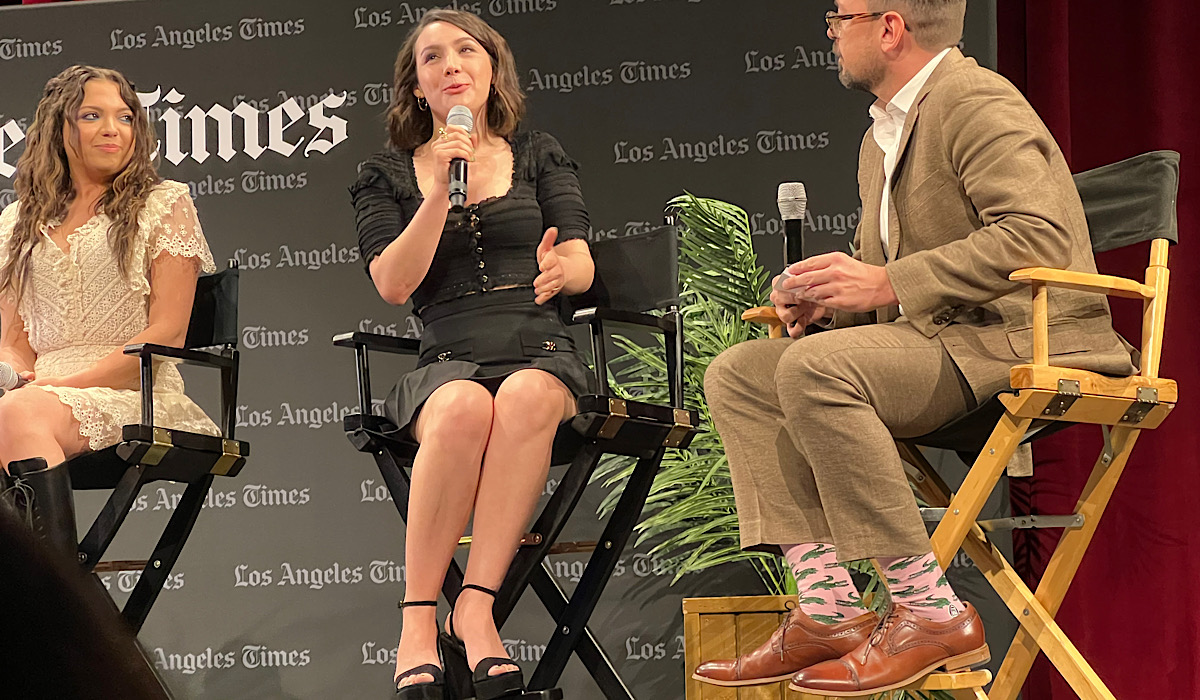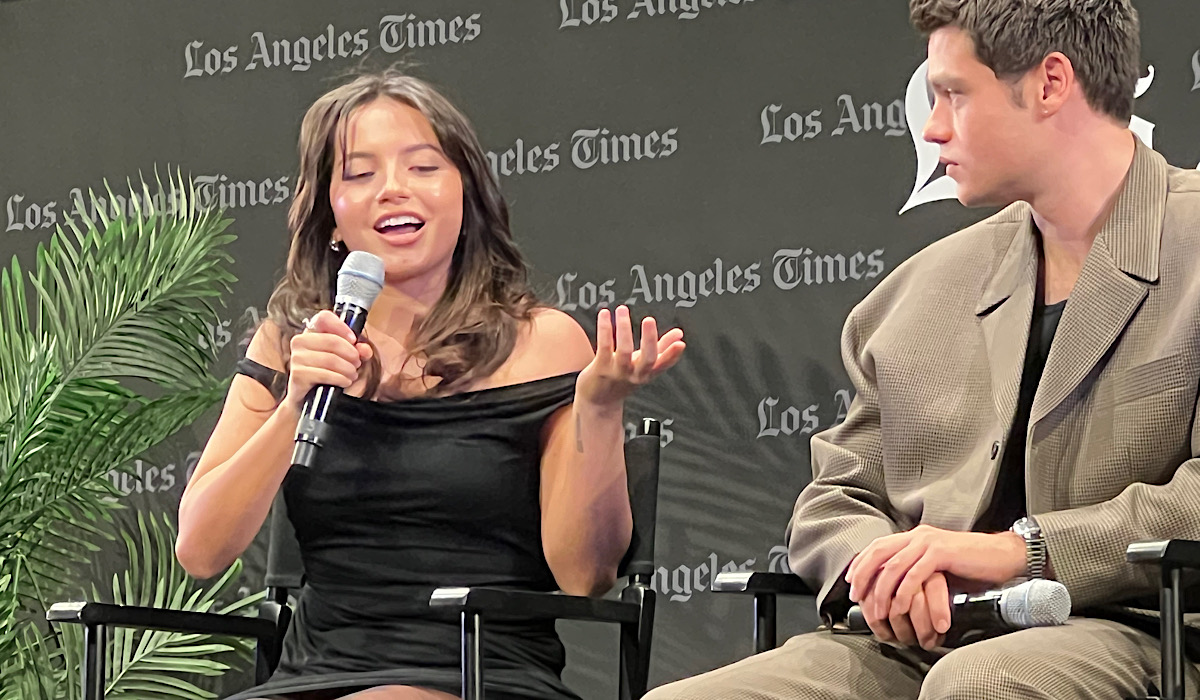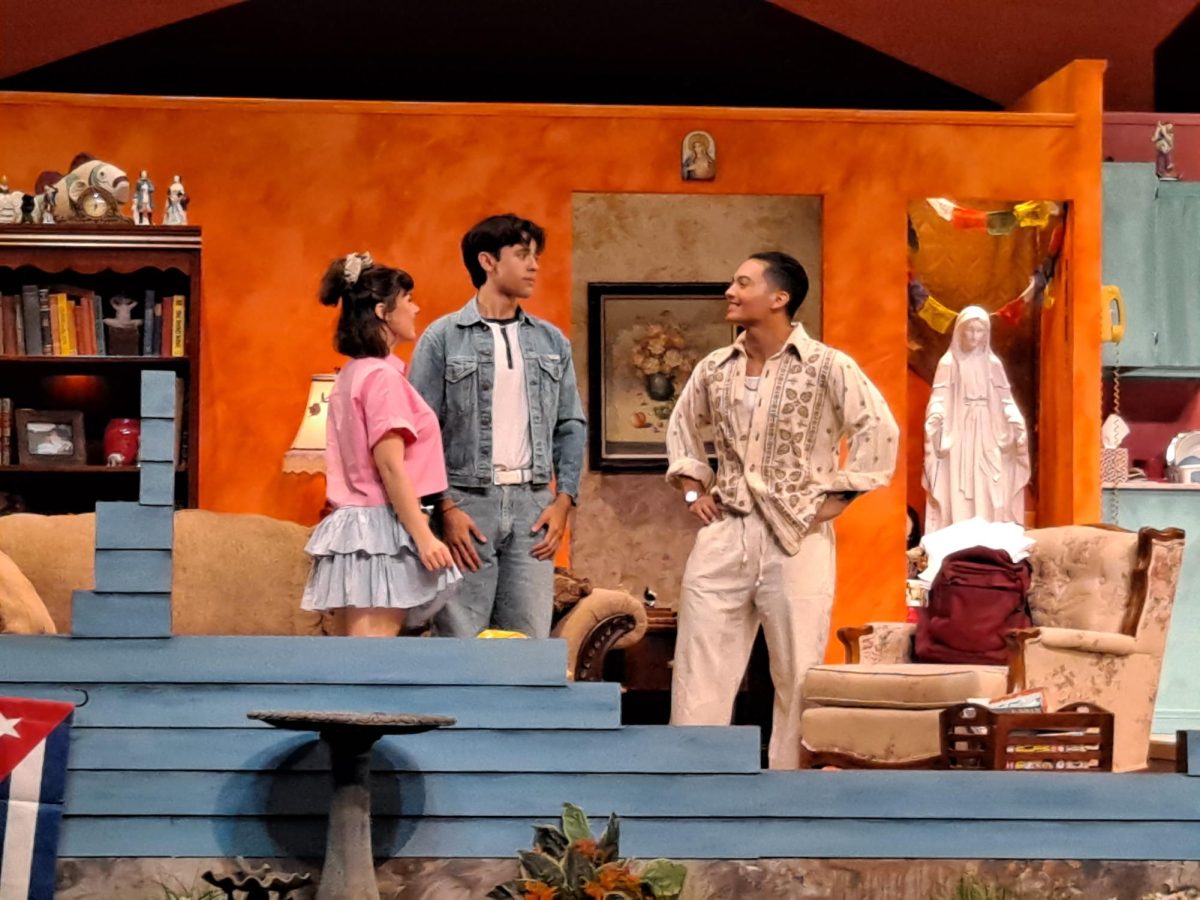The Los Angeles Times Festival of Books debuted Hannah Marks’ highly anticipated screen adaptation of John Green’s bestselling young adult novel “Turtles All the Way Down” on April 20, 2024.
When the curtains came down, the standing room only crowd showed rapturous support for this poignant and visceral depiction of how OCD impacts relationships and daily functioning for those who suffer from it.
The movie, which is currently streaming on Max, stars Isabela Merced as Aza Holmes, the 16-year-old who harbors an unhealthy obsession with the C. diff bacterium and sees everything around her as a carrier for it. Aza, whose father died in childhood and who shares a strained relationship with her mother (Judy Reyes), attends therapy sessions but resists taking the medications that might alleviate her OCD. Instead, she relies on best friend Daisy (played by Cree) as her confidante and support system. Daisy calms Aza in moments when she devolves into intrusive thinking.
Daisy and Aza decide to investigate the disappearance of a wealthy man whose son, Davis (Felix Mallard), attended the same grief counseling camp as Aza, in order to earn the $150,000 reward. Aza reconnects with Davis and the two become romantically involved. But ever present are Aza’s obsessions with C. diff, which soon interfere with her relationships and impact her ability to maintain the illusion of normality.

Green wrote the novel in 2017 as a swan song to his young adult series of stories and spoke about his experience with OCD in the panel proceeding the screening. Green always thought the subject matter would be difficult to show on the big screen but is pleased with how the story has been received and interpreted, praising Marks’ adept direction.
“My goal was to find some kind of direct form or expression for the experience of OCD and severe anxiety rather than relying on simile or relying so much on the compulsive behaviors that are such a part of the way that it’s typically depicted,” said Green.

Marks spoke about her connection with Green’s material, identifying with the anxiety and fear that percolates when an attack is imminent. In the film, Marks visually interprets Aza’s obsession with germs as quaking, strobe-like images of cells that flash rapidly in succession. This static and noise of these strobing images that echoes through Aza’s head is a familiar feeling for Marks, who makes these attacks immediate and palpable to viewers.
“I wanted to do right by John. It’s based a lot on his personal experiences, but I also struggled with similar things like Aza, so I wanted to get it right for myself and my younger self,” said Marks. “I remember reading the book and the scene that really floored me was the fight between Aza and Daisy crashing the car. I definitely heard some of those words before, but I’ve never seen it on the screen. That was really the moment in the book where I was desperate to see make it into the movie.”
Green’s fans are enthusiastic proponents of his young adult books. The tightly controlled line began hours before screening. Henry, visiting from Baltimore, attended the screening with his brother and a friend and spoke highly about Green’s connection to his youthful audience.
“I actually went to the same school that John Green went to—Kenyon College in Ohio—and I also majored in English. And yeah, I think he’s really good at speaking to younger generations. Not in a way that glamorizes it, but it feels real,” said Henry.
The cast echoed Henry’s thoughts, speaking to the immediate impact and engagement with mental health by working on the film and portraying these characters.
“I just freshly turned 20, and I was in such a weird stage of my life. I was just so confused about how to be and how to act. Not that that’s all changed. It just feels different now,” said Merced. “And so I think seeing myself up there as I was in that moment, I learned a lot. She [Aza] taught me a lot about myself.”

Reyes may have come into the project playing the role of mother, but the experience of directly dealing with mental illness in the script and witnessing how this younger generation managed the issues was a revelation. Reyes admitted that in her own generation and culture, mental health was swept under the rug.
“Their relationship and their understanding of mental health issues was completely new to me, and it’s something I have experienced with my own kid,” explained Reyes. “It was like a gift to be able to work this out or share the mother’s challenges where it emotionally feels so rich to me. Where I come from, you treat mental health like it’s not real. And so when I deal with my own child and to be able to come to terms with the fact that sometimes I have no idea what to do, is comforting.”

One place that Moorpark College Student Health Center Coordinator Allison Barton recommends students and parents consult is NAMI, the nation’s largest grassroots mental health organization, when looking for support on dealing with OCD.
“The organization provides advocacy, support, education and resources for individuals and families affected by mental illness, inclusive of all, without discrimination and stigma,” says Barton.
Reyes reflected on her experience with Marks and Green, acknowledging the delicacy in approach to the material.
“Hannah would just frame everything so magnificently in this book from John Green,” continued Reyes. “It’s just comforting to see how on top of it they were with this challenge to communicate a story where there’s room for friendship and marriage and pain and acceptance. It’s something to deal with, not something that will not destroy you.”
And as the audience soaked in the discussions, standing as the actors left the stage to rousing applause, so too did its creator, John Green, as he peeked from behind the curtain and waved an appreciative goodbye to an audience who had stayed and connected for nearly three hours on a Saturday afternoon.













